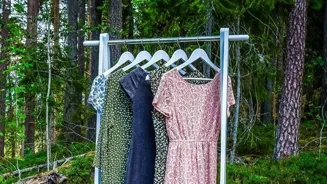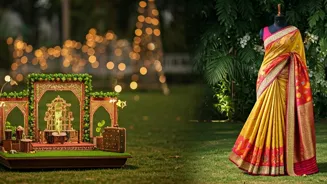Handloom 2.0: Old-world charm meets new-age cool.
Once considered traditional and reserved for special occasions, handloom clothing is undergoing a cultural
rebranding—and it’s Gen Z that’s providing the new narrative.
In an age of fast fashion, next-day deliveries, and ever-changing nature of trend cycles, it's heartening to see young Indians turning back to their roots. This National Handloom Day, let’s decode why Gen Z is choosing khadi over polyester and handwoven dupattas over synthetic scarves.
From Insta-Famous to Eco-Fabulous
Believe it or not, modern day consumers are more aware than ever. Gen Zs know that fashion is one of the most polluting industries in the world. Moreover, what you wear is not just about style—it’s about values. Handloom fashion offers the perfect combo of authenticity, sustainability, and aesthetics.

You’ll find college students pairing jamdani kurtas with jeans, or influencers styling ikat jackets over crop tops. #HandloomLove and #SustainableStyle are trending hashtags for all good reasons!
Slow Fashion, Strong Values
Unlike commercially-produced clothes, handloom pieces are created slowly and mindfully, often taking days or even weeks. For Gen Z, this slowness isn’t a drawback. Wearing handloom is like owning a piece of art. Each weave tells the stories of culture, tradition, and the artisan who created it.
In an era that glorifies hustle culture, slow fashion feels radical and necessary.
Supporting Artisans, One Saree at a Time
As per recent estimates, India has more than 43 lakh handloom weavers and allied workers, most of whom are from rural areas. When you buy a handloom product, you're directly supporting their livelihoods and empowering communities while preserving cultural heritage, and. Gen Z consumers are not only concerned about fashion, they're looking for impact.

Heritage Meets Hype
Handloom is no longer ‘old-fashioned’. In fact, it’s being reimagined by young designers, indie labels, and even celebrities in a new way. Think Alia Bhatt in a chanderi sari or Ranveer Singh flaunting printed bandhgalas.
Instagram boutiques are curating modern takes on classics like bandhani skirts, linen shirts, and tussar silk blazers. These are no longer pieces for your grandmother’s trunk—they’re for your next concert, brunch, or even a Tinder date.
Designer Sagarika Rai, owner of Warp ‘n Weft said in a conversation: “Gen-Z is exploring it more. For example, wearing sneakers beneath the saree, especially with the uptick in the pre-draped saree’s popularity. Blazers are also often paired with sarees, and crop tops are regularly worn as blouses.”

Observed every year on August 7, National Handloom Day commemorates the Swadeshi Movement. This is a reminder of India’s self-reliant spirit. Today, it’s more relevant than ever as we battle climate change, globalization, and cultural erasure. Celebrating handloom is not just about nostalgia—it’s about future-proofing our very own fashion.
Proudly and consciously, Gen Z is leading the movement of bringing back the much deserved glory of handloom weaves. They’re proving that being stylish doesn’t mean being unsustainable.












